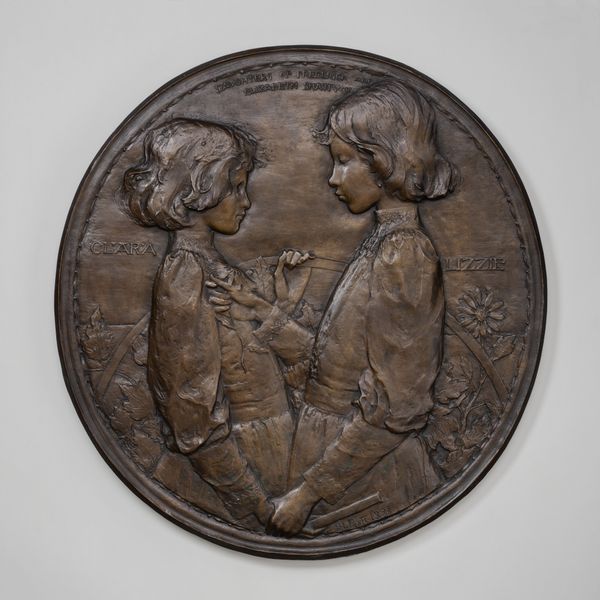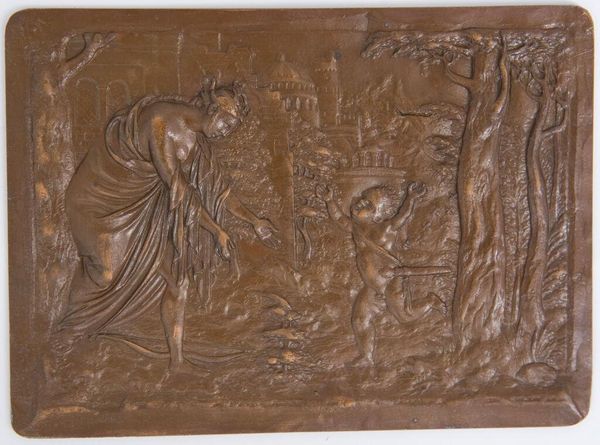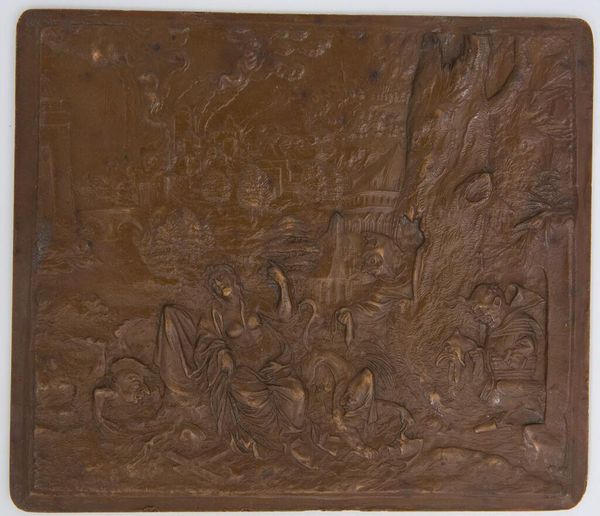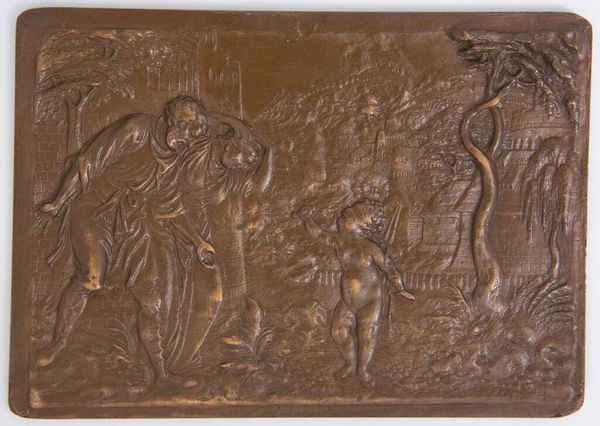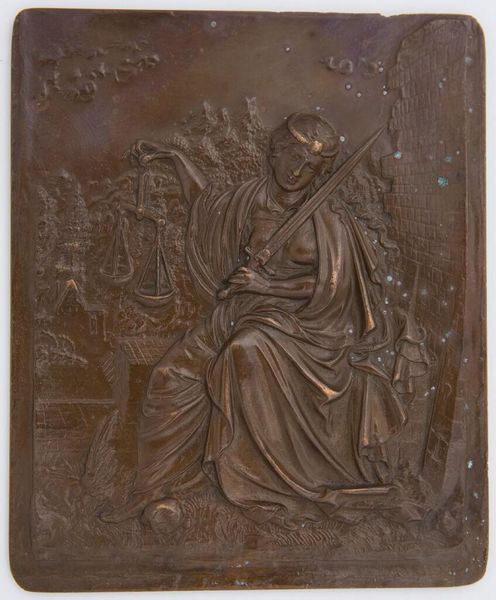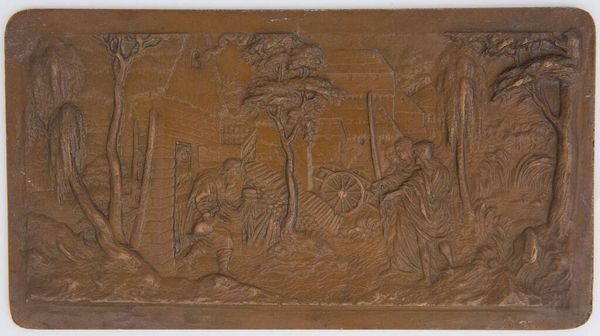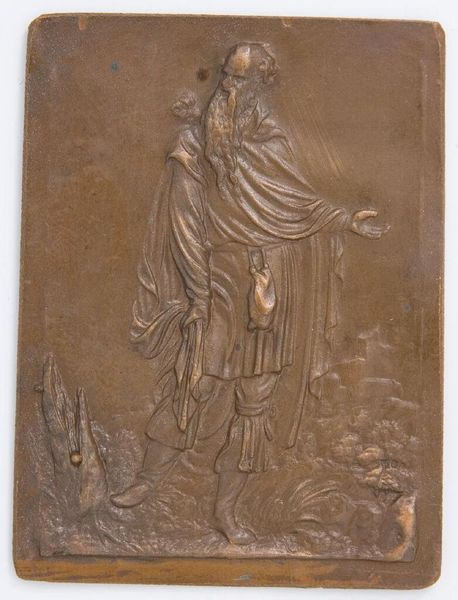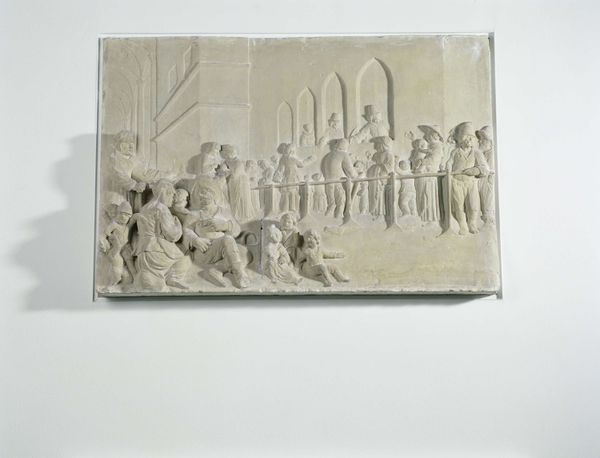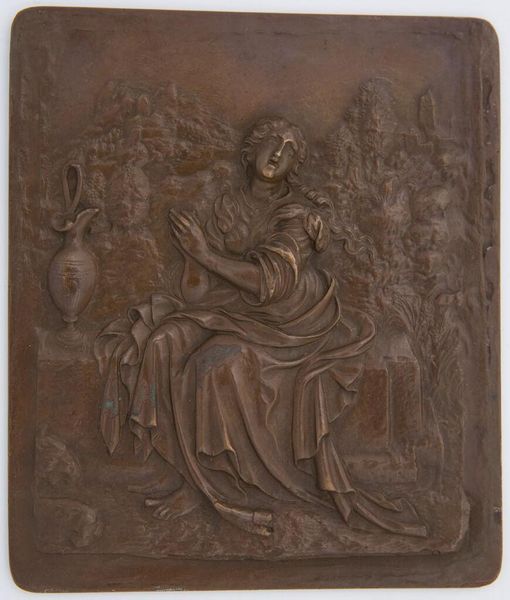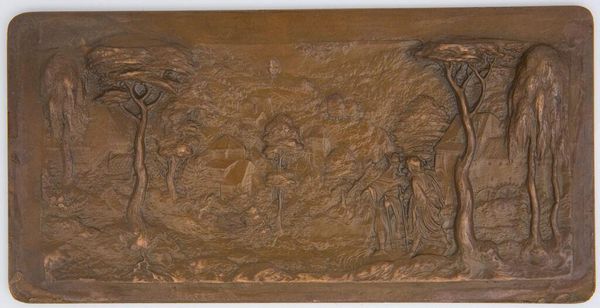
William Henry II and Cornelius Vanderbilt III 1882
0:00
0:00
relief, bronze, sculpture
#
portrait
#
sculpture
#
relief
#
boy
#
bronze
#
figuration
#
carved into stone
#
sculpture
#
group-portraits
#
academic-art
#
profile
Dimensions: 16 1/4 x 26 1/8 in. (41.3 x 66.4 cm)
Copyright: Public Domain
Curator: The Met is home to a compelling bronze relief titled "William Henry II and Cornelius Vanderbilt III," crafted in 1882 by Augustus Saint-Gaudens. What strikes you most about this work? Editor: It's imbued with a profound sense of melancholy. The subdued bronze palette combined with the children's solemn expressions evokes a bygone era of rigid societal expectations and lost innocence. Curator: Indeed. Saint-Gaudens, a master of the American Renaissance, manipulates the bronze to achieve a remarkable chiaroscuro effect, emphasizing the delicate contours of the boys' profiles. Notice how their gazes, averted yet parallel, create a sense of unity despite their individual portrayals. Editor: I see that, yet I can’t ignore the social implications of such a commission. It feels like a gilded cage, a rendering of boys born into immense privilege during a time when class divisions were deeply entrenched and brutally enforced. Are we meant to simply admire their beauty, or also critically examine the system that elevated them? Curator: Both, I believe. The formal qualities—the precision of line, the texture of the bronze—establish it within the artistic conventions of its time. The delicate rendering is masterful in the treatment of light and shadow. It allows us to explore Saint-Gaudens' remarkable control of medium. Editor: But that very control is also part of the problem, isn't it? It's a deliberate construction of an image designed to reinforce power dynamics. These boys were being molded, sculpted, just like the bronze itself, into heirs of a vast empire. Curator: Perhaps. Or perhaps it is an acknowledgement of an emerging future. The figures point forwards and upwards within the composition of the plane itself. The visual interplay transcends mere documentation, hinting at a grand narrative arc of fortune and heritage. Editor: A narrative built, undeniably, on the backs of others. These portraits invite a wider conversation about the legacies we choose to celebrate, and what such visual representations conceal and uphold. Curator: Precisely. By attending to form and history we may uncover hidden meaning, layered nuances, within seemingly straightforward images. Editor: Absolutely. Examining art through a multiplicity of lenses gives the viewer the opportunity to connect the past with relevant discussions in the present day.
Comments
No comments
Be the first to comment and join the conversation on the ultimate creative platform.
